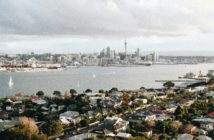In terms of an overall view, apartments aren’t generally performing any worse or better than the wider property market, although top end apartments (by size/value) could be worth keeping an eye on, says CoreLogic Senior Research Analyst Kelvin Davidson

For apartments, the key markets across the country are Auckland City, North Shore, and Wellington City, and then to a lesser extent in Tauranga and Christchurch. In this article, we’ve focused mostly on Auckland City and Wellington (as these are the largest markets and therefore give us the biggest samples for sale prices). And as the first chart shows, although the annual change in average apartment sale prices can be volatile, generally speaking Wellington has continued to grow in the past few years, Auckland City has been more subdued, while the North Shore has seen falls. Those respective price patterns are broadly consistent with what we’ve seen lately for average property values across all types of dwellings.

It’s also reassuring in terms of the reliability of measures based on average sale prices (as opposed to values across all properties) to see that actual volumes for apartments aren’t tracking any differently than the wider market. For example, the second chart shows that Auckland City apartment sales have fallen over the past year or two, but by no more than all sales across the wider Auckland region (note the different scales on the left and right axes on the second chart).

A breakdown of recent apartment price trends by size is also really interesting. Within the generally flat picture for Auckland City apartment prices at present, there are differences across the segments – as the third chart shows, the ‘very small’ and ‘small’ brackets (0-39 sqm and 40-70 sqm respectively) have seen modest price falls lately, but the’ medium’ size apartments (71-125 sqm) have held up much better – note that more than 70% of Auckland City apartment sales over the past year have been either small or medium. At the upper end (126+ sqm), however, ‘large’ sale prices have been much weaker (although they account for only 7% of sales, so the price trends here need to be treated with caution).

In Wellington, the fourth chart shows that it’s the small size bracket (53% of sales) that has performed best over the past year in terms of sale prices, while very small and medium apartments in the capital have seen only minor drops. Again, the upper end of the market (by size, and hence price) has been the weakest, although they are a smaller (10%) share of sales.

Overall, then, there’s nothing here that is especially surprising or gives us genuine cause for concern. To date there’s no clear and obvious weakness across most of the apartment market (despite insurance premium rises in Wellington and large development pipelines in Auckland), although the very top end does seem to have weakened a little, perhaps due to the Foreign Buyer Ban. That could be the apartment segment to keep an eye on.



